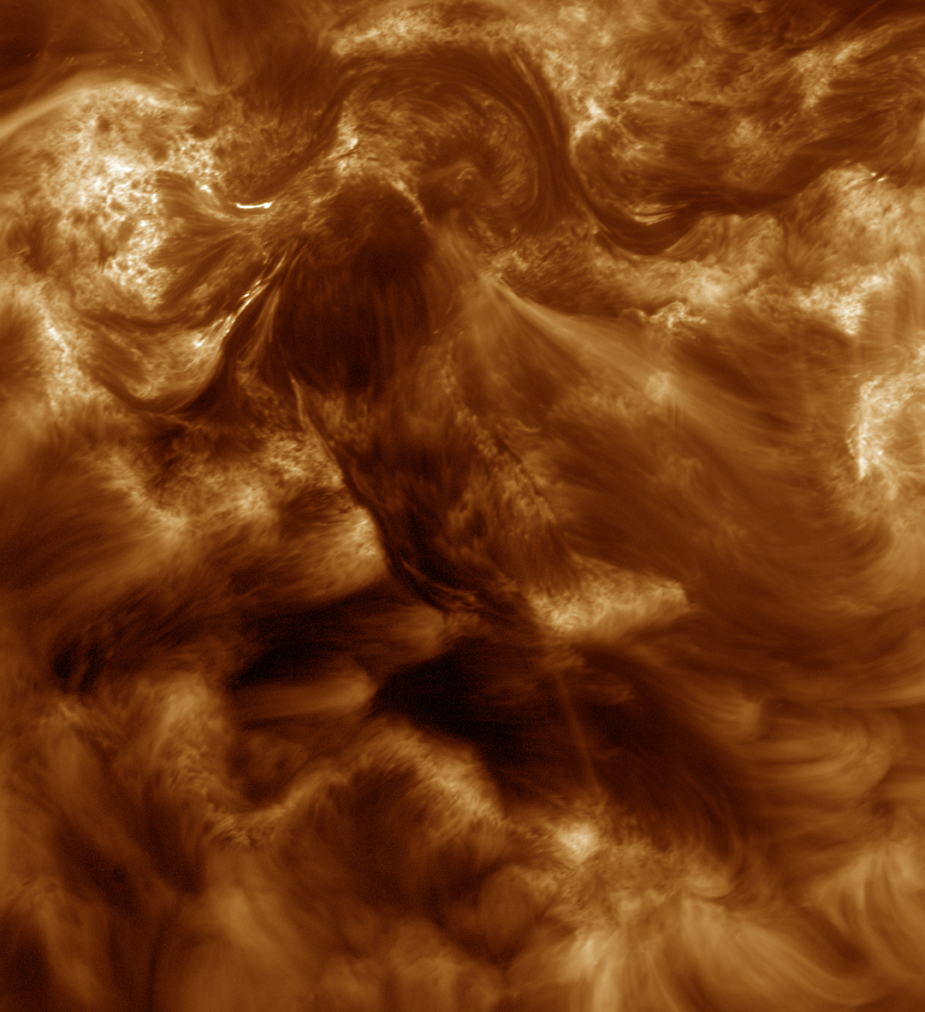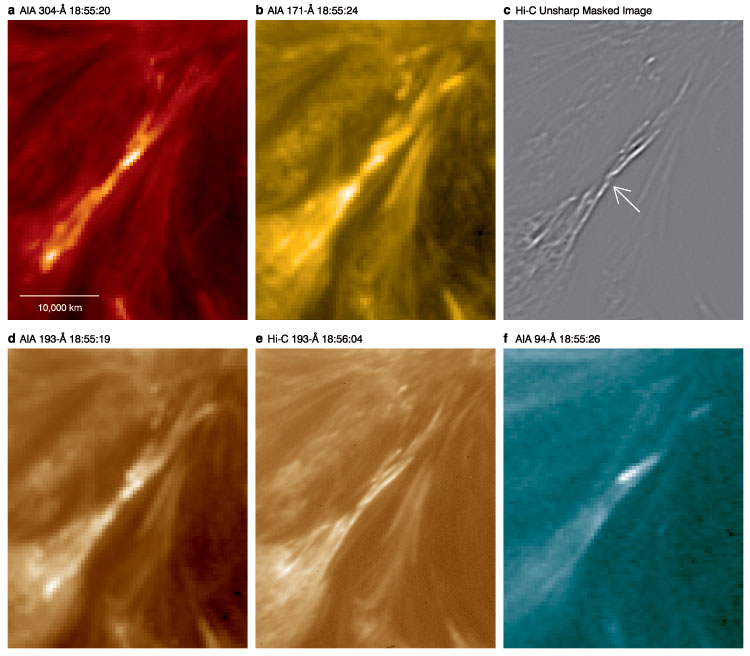Image List
-

This is one of the highest-resolution images ever taken of the solar corona, or outer atmosphere. It was captured by NASA's High Resolution Coronal Imager, or Hi-C, in the ultraviolet wavelength of 19.3 nanometers. Hi-C showed that the Sun is dynamic, with magnetic fields constantly warping, twisting, and colliding in bursts of energy. Added together, those energy bursts can boost the temperature of the corona to 7 million degrees
Fahrenheit when the Sun is particularly active.
NASA -

Hi-C found interweaved magnetic fields that were braided just like hair. When those braids relax and straighten, they release energy. Hi-C witnessed one such event during its flight, shown in this time series.
NASA -

Hi-C also detected an area where magnetic field lines crossed in an X, then straightened out as the fields reconnected. Minutes later, that spot erupted with a mini solar flare. Images of the same location taken with the Atmospheric Imaging Assembly (AIA) aboard the Solar Dynamics Observatory show the superior resolution of Hi-C.
NASA